
Christian Ludwig Attersee (born Christian Ludwig on 28 August 1940 in Bratislava) is an Austrian artist. [1]

Christian Ludwig Attersee (born Christian Ludwig on 28 August 1940 in Bratislava) is an Austrian artist. [1]
After he had spent his youth in Upper Austria (also at the Attersee, the origin of his artist's name), Attersee began his studies in 1957 at the then-named Vienna Akademie für angewandte Kunst' (Academy of Applied Arts, in 1998 renamed to "University of Applied Arts") with E. Bäumer, keeping these up until 1963. From 1966 on, he was involved with the short-lived Viennese Actionism movement. Being very intrigued by object and action art from the start, Attersee attempted to combine music, speech, photo and video art with the basic form to create a new form of total artwork (also known by the German term Gesamtkunstwerk) like object inventions such as the "Speisekugel" ("food sphere"), the "Speiseblau" ("food blue"), the "Prothesenalphabet" ("prosthetical alphabet"), the "Speicheltönung" ("saliva tinge" or "saliva hue"), the female vagina as an object of art, as well as the self-coined "Attersteck". In later years, the quintessence of his work shall be characterized by subjects like sexuality and natural studies. One example is the provocative Kinderzimmertriptychon (Nursery Triptych) from 1971, which is inspired by a picture-book illustration of Fedor Flinzer. [2]
His work is denoted by a figural-to-symbolic style transition, bright colors and an energetic ductus. Moreover, there are ambiguous, artsy connotations and imaginations of a likewise free-spirit and very Austrian mentality with a bias towards sexual malapropism. The context too gets incorporated into the artist's work many times, along with additional textual elements embedded into it.
Attersee's exhibitions are likely to be composed of art shows, accompanied by music and literature, and to some extent even by fellow artists attending and participating in the show.
In 1984, Attersee represented his home country at the Venice Biennial. Since 1990, he has held a chair at the Vienna University of Applied Arts and is one of the most renowned contemporary Austrian artists worldwide.
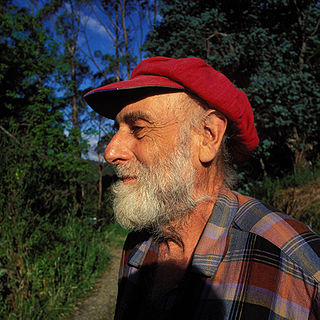
Friedrich Stowasser, better known by his pseudonym Friedensreich Regentag Dunkelbunt Hundertwasser, was an Austrian visual artist and architect who also worked in the field of environmental protection.

Peter Weibel was an Austrian post-conceptual artist, curator, and new media theoretician. He started out in 1964 as a visual poet, then later moved from the page to the screen within the sense of post-structuralist methodology. His work includes virtual reality and other digital art forms. From 1999 he was the director of the ZKM Center for Art and Media Karlsruhe.

Christine Nöstlinger was an Austrian writer best known for children's books. She received one of two inaugural Astrid Lindgren Memorial Awards from the Swedish Arts Council in 2003, the biggest prize in children's literature, for her career contribution to "children's and young adult literature in the broadest sense." She received the Hans Christian Andersen Medal for "lasting contribution to children's literature" in 1984 and was one of three people through 2012 to win both of these major international awards.
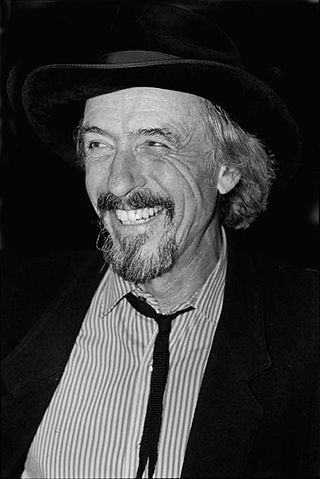
Arik Brauer was an Austrian painter, printmaker, poet, dancer, singer-songwriter, stage designer, architect, and academic teacher.
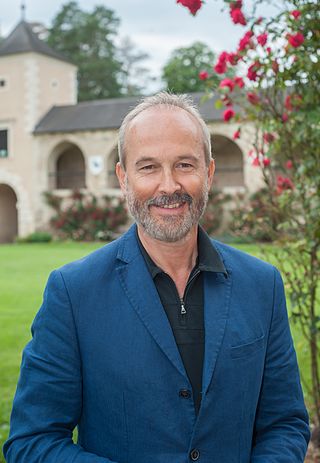
Erwin Wurm is an Austrian artist. He lives and works in Vienna and Limberg in Austria; Hydra, Greece; and in New York City.

The Dresden Academy of Fine Arts, often abbreviated HfBK Dresden or simply HfBK, is a vocational university of visual arts located in Dresden, Germany. The present institution is the product of a merger between the famous Dresden Art Academy, founded in 1764, the workplace and training ground of a number of influential European artists, and another well-established local art school, Hochschule für Werkkunst Dresden, after World War II.
Ludwig Merwart was an influential Austrian painter and graphic artist. He is an important representative of Tachism and was a major force in graphic arts and prints, especially after World War II. His work belongs to the most significant and interesting contributions to graphic arts in Austria to this day.

Franz West was an Austrian artist.
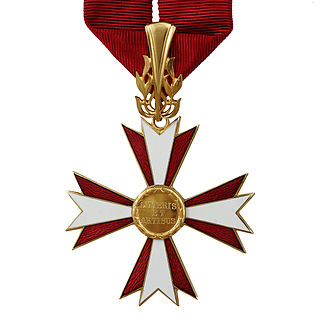
The Austrian Decoration for Science and Art is a state decoration of the Republic of Austria and forms part of the Austrian national honours system.
Ernst Hilger a curator as well as the owner and founder of Hilger modern/contemporary and Hilger BrotKunsthalle.
Thomas Reinhold is an Austrian painter, one of the initiators of so-called “New Painting”.
Hugo Markl is a contemporary American artist, curator, and creative director. He studied Visual communication at the University of Applied Arts Vienna (1985–90) where he graduated with an M.A. in fine arts. His practice spans a broad range of media including sculpture, photography, video, drawing, printmaking, installation art, and performance. Markl lives in New York City.
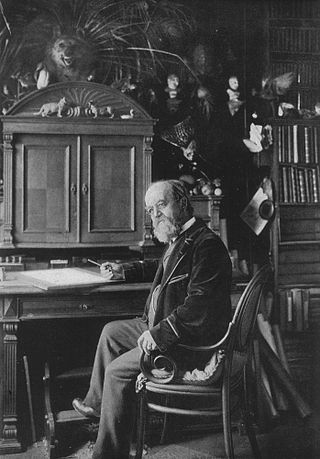
Fedor Alexis Flinzer was an author, educator and one of the greatest German illustrators of the Gründerzeit, who was called Raphael of Cats.
Brigitte Kowanz was an Austrian artist. Kowanz studied from 1975 to 1980 at the University of Applied Arts Vienna. She was Professor of Transmedial Art there from 1997.
Manfred Erjautz is an Austrian artist.

Gerhard Rühm is an Austrian author, composer and visual artist.
Leo Zogmayer is an Austrian artist, living and working in Vienna and Krems.

Maria Baumgartner is an Austrian studio potter and was professor of ceramics at the University of Arts and Industrial Design Linz.
Franz Josef Georg Clemens Maria Leopold Salvator, Prince of Altenburg was an Austrian ceramicist and sculptor. He was a member of the House of Habsburg-Lorraine. He was regarded as a leading modern ceramicist of Austria, and received awards including the Decoration of Honour for Services to the Republic of Austria.

Anna Jermolaewa is a Russia-born conceptual artist based in Vienna, Austria since 1989. Her artistic practice incorporates a wide range of media: video, installation, painting, performance, photography, and sculpture. In 1999, her video work Chicken Triptych was selected by Harald Szeemann to be presented in the Arsenal location of the 48th Venice Biennale. On 16 January 2023, it was announced that Jermolaewa will represent Austria in the 60th Venice Biennale in 2024, exhibiting in the Austrian pavilion in the Giardini della Biennale.
You can help expand this article with text translated from the corresponding article in German. (July 2010)Click [show] for important translation instructions.
|